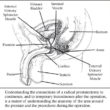Personalizing Active Surveillance:
How to Predict if Prostate Cancer Will Become Aggressive
Research led at the University of California San Francisco identified seven clinical characteristics of men

with low-risk prostate cancer that could help determine which patients have more—or less—risk of later developing intermediate- or high-risk disease. This could help tailor screening protocols for men on active surveillance.
Increasingly, men with low-risk prostate cancer are choosing active surveillance rather than undergoing immediate treatment. This avoids potential overtreatment and is associated side effects. However, the downsides are active surveillance include repeat screening biopsies that could increase anxiety, the risk of complications, and cost of care. Optimizing active surveillance protocols will be of great benefit for men with low-risk prostate cancer.
The researchers of this study employed these characteristics in their calculations to identify future risk of disease progression: maximum percent of positive cores, the history of a negative biopsy after diagnosis, time since diagnosis, BMI, prostate size, PSA at diagnosis, and PSA kinetics.
Then, they developed a predictive model based on these characteristics that calculates an individual’s risk level, which could thus be used to individualize screening strategies for patients on active surveillance. For some patients, predictive models such as this could help avoid some of the invasive strategies used to monitor patients on active surveillance, such as repeat biopsies.
The study included 850 men with low-risk prostate cancer who were on active surveillance and 533 men in a validation group.
A calculator using the model in this study is available online at https://canarypass.org/calculators/.
JAMA Oncol. 2020 Aug 27;e203187. doi: 10.1001/jamaoncol.2020.3187. Online ahead of print.
©Dan Oldfield


















